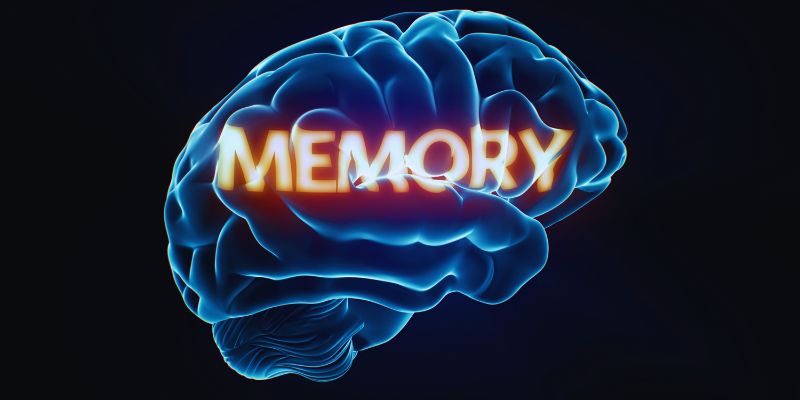Movement is essential for improving physical and mental health. Recent studies have shown a clear relationship between regular physical exercise and improved memory recall. Moving increases the oxygen and nutrients our brain absorbs, enhancing cognitive ability. It also increases brain plasticity, thereby improving memory capacity and learning abilities.
Brain performance can be enhanced by basic exercises such as dancing, stretching, or walking. Maintaining activity also helps avoid memory-related disorders like dementia and lowers stress. This article explores how certain movements could improve memory and brain function. Explore how greater activity might boost long-term memory and sharpen your thinking.

The Science Behind Movement and Memory:
Our brain needs constant stimulation if we are to remain sharp and healthy. Maintaining the brain active requires physical activity in great part. Blood flow to the brain rises with our movement. That increases the oxygen and nutrients this supplies to brain cells, enhancing their performance. Regular movement has been found to promote the growth of fresh hippocampal neurons. Learning and memory are functions of the hippocampus.
Furthermore, exercise lowers the risk of cognitive deterioration. Those who keep physically active are less prone to memory-related disorders, including dementia. Aerobic activities like swimming or running are especially powerful. They increase brain plasticity, thus strengthening memory retention and learning ability. Mental clarity benefits from even little motions like stretching or mild walking.
Types of Movements That Improve Memory
Many forms of activity can assist in distinct ways to enhance memory. Aerobic sports like cycling or jogging raise heart rate. That generally increases brain function by pumping more oxygen into it. Resistance training can also improve memory—that is, weight lifting. It encourages the release of growth factors that support optimal communication among brain cells.
Useful are also deliberate motions like yoga or tai chi. These techniques emphasize balance and breathing. They lower tension and increase focus, therefore enhancing memory. Simple daily tasks, including gardening or stair climbing, count as activities. Staying constant is the secret. Small, consistent movements enhance long-term memory retention.
How Does Movement Help Reduce Memory Loss Risks?
Regular movement helps to lessen memory loss. Physical exercise maintains the brain and health in an active state. As we age, our brain cells begin to decrease, which influences cognition and memory. Still, consistent activity can slow down this process. Particularly in the hippocampal region, it aids in preserving brain volume.
Exercise also lowers stress levels, including cortisol. Memory issues have been connected to high cortisol levels. By lowering stress, exercise guards the brain against cognitive loss. Movement also enhances sleep quality. Improved sleep facilitates memory consolidation—that is, information processing and storage by the brain.
Brain-Boosting Activities for Busy People:
Busy schedules make physical exercise difficult to give top priority. Still, you can include little brain-boosting movements into your everyday schedule. Short walks taken during breaks can improve cognitive ability. Sitting at your workstation and performing stretching exercises helps blood flow. Still, another enjoyable approach to improving memory is dancing. It uses learning new steps and physical movement to activate the brain.
Your brain stays active even with simple housework like organizing or cleaning. To prevent long stretches of inactive behavior, use steps rather than lifts. To boost movement, park farther from your goal. Little actions taken now add up to better memory quality. Busy people can include these rapid motions to keep their brains engaged and sharp.
Mental and Emotional Benefits of Regular Movement:
Movement enhances qualities beyond memory. It helps with emotional and mental health. Endorphins—also called "happy hormones"—are released during physical exercise. These substances lower depression, anxiety, and stress, therefore enhancing general mood. Movement also helps with focus and concentration.
Regularly active people often have longer attention spans. They remember new material for extended periods and digest it fast. Better decision-making abilities follow from improved emotional health as well. Mental stability helps you to remember crucial knowledge and manage obstacles. The movement also preserves social ties. Group activities or outside walks provide chances to interact with people. Good social contacts also help memory and brain function.
Movement and Brain Plasticity:
Brain plasticity, then, is the brain's capacity to develop and adapt. Enhancing brain plasticity mostly depends on movement. Moving causes the brain to establish fresh neural connections, which enhance learning capacity and memory.
Furthermore, physical exercises stimulate brain-derived neurotrophic factor (BDNF) synthesis. BDNF is a protein that promotes brain cell development and repair. It facilitates the creation of fresh paths, enhancing memory recall. Your brain changes to accommodate learning new things the more you travel. Diverse motions improve brain plasticity. Changing between swimming, yoga, or jogging tests the brain. It maintains mental clarity and helps against monotony. This versatility enhances long-term as well as short-term memory.
Creating a Movement-Friendly Routine for Better Memory:
Enjoying the cerebral rewards of movement depends on consistency. Beginning with little adjustments to your daily schedule, Though just for a few minutes, aim to move every hour. Your brain will stay active with walking, stretching, or basic workouts. Think about three to four times a week, including cardiovascular exercises. These can call for dancing, riding, or fast walking.
Twice a week, including muscle-building activities to boost brain communication. Daily mindfulness practices, including yoga, help to achieve mental clarity. See your development to keep inspired. Devices for fitness or apps can track your motions. Your brain's condition improves with increasing consistency of your schedule. Maintaining active results in a better intellect and sharp memory.

The Connection Between Memory and Movement in Older Adults:
Regular mobility helps older folks. Memory issues become more typical as one ages. Still, physical activity lowers some hazards. Studies show that regular activity helps older people retain their memories better. Walking, among other light exercises, helps older persons remember better. Movement stops the atrophy of the aging-affected hippocampal brain region. It also lessens inflammation, which damages brain cells.
Older people are encouraged to remain active through group events, including yoga sessions or dancing courses. Social contacts in these sessions help to promote mental health and lower loneliness. Physical and psychological participation helps retain memory and general brain function.
Conclusion:
Including more activity in daily life greatly enhances brain capacity and memory. Regular exercise lowers cognitive decline risk, increases brain plasticity, and generates new neural connections. Maintaining activity improves mental and emotional well-being, whether through ordinary daily activities, conscious motions, or aerobic exercises. Movement also helps sleep, lowers stress, and raises mood—all of which help to enhance memory retention. Give regular movement a top priority in your regimen to maintain the sharpness and wellness of your brain for years to come. Little activity goes a long way in maintaining memory and advancing general brain function.







